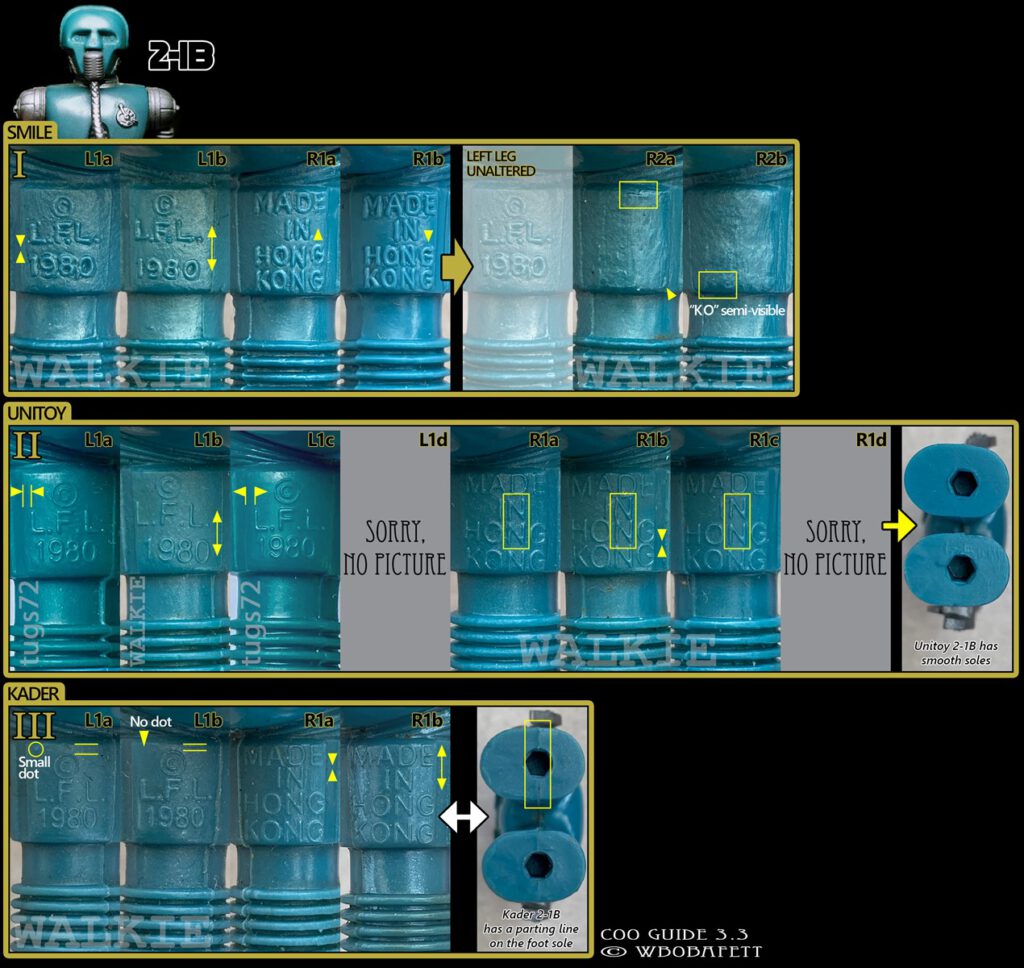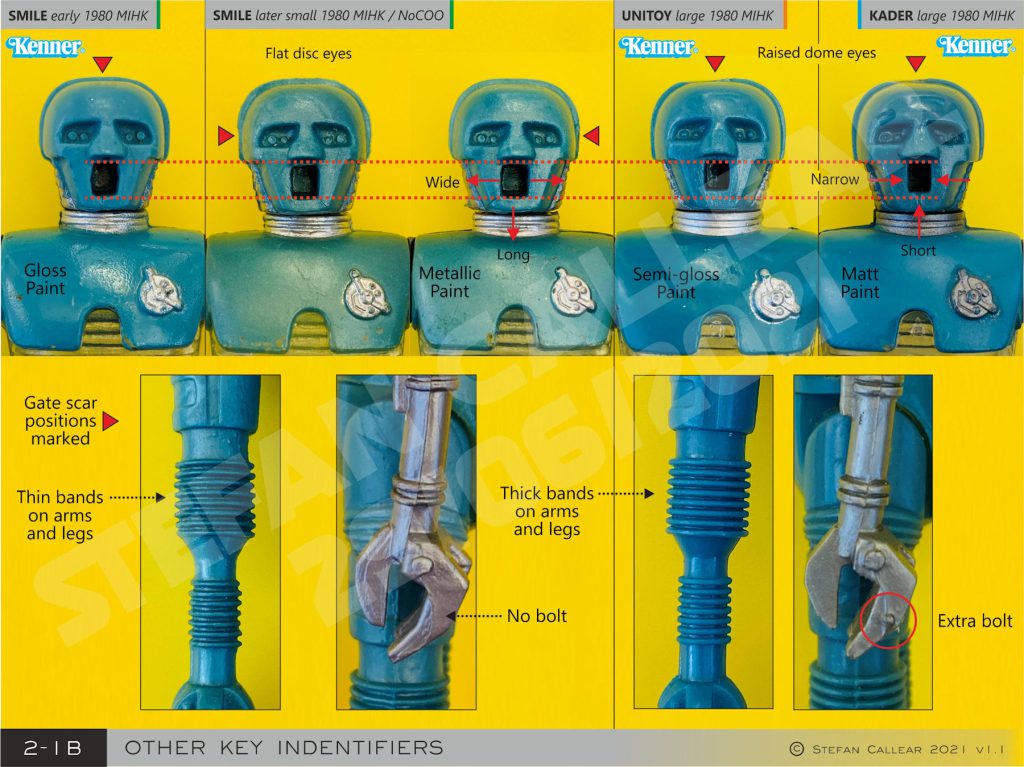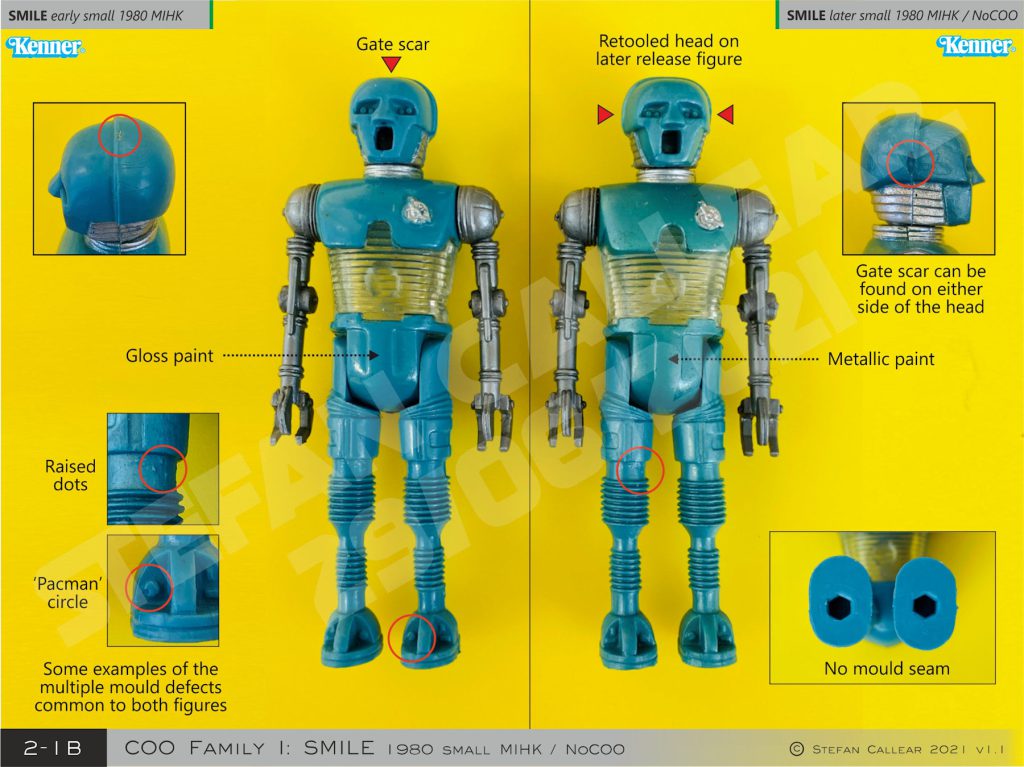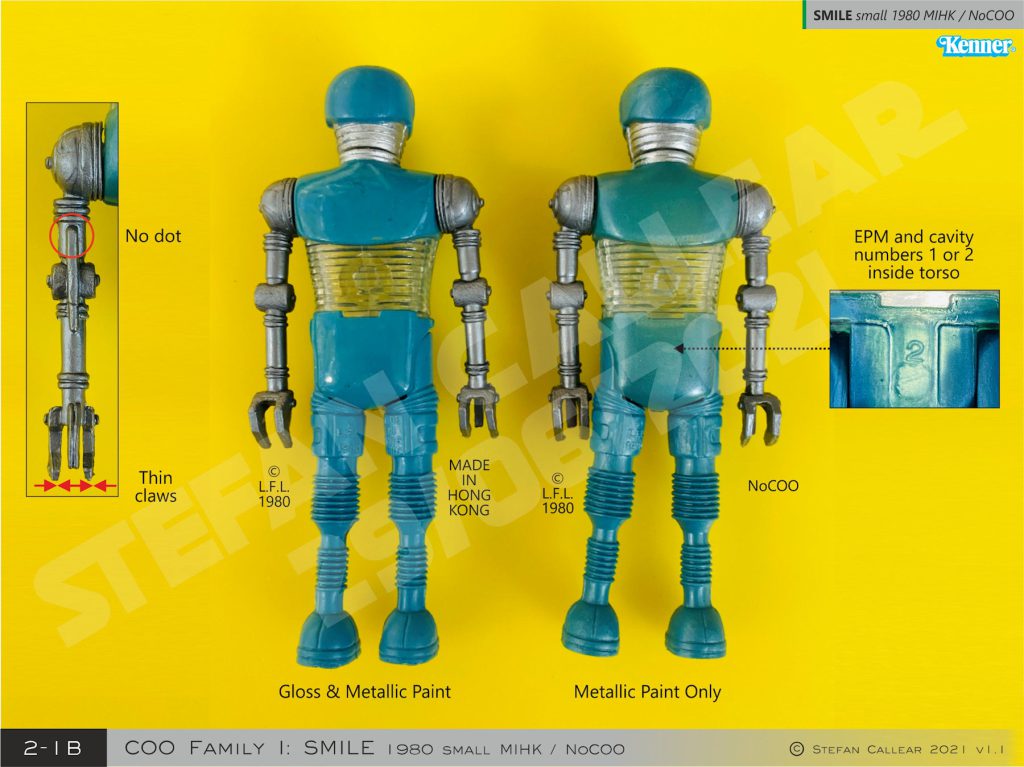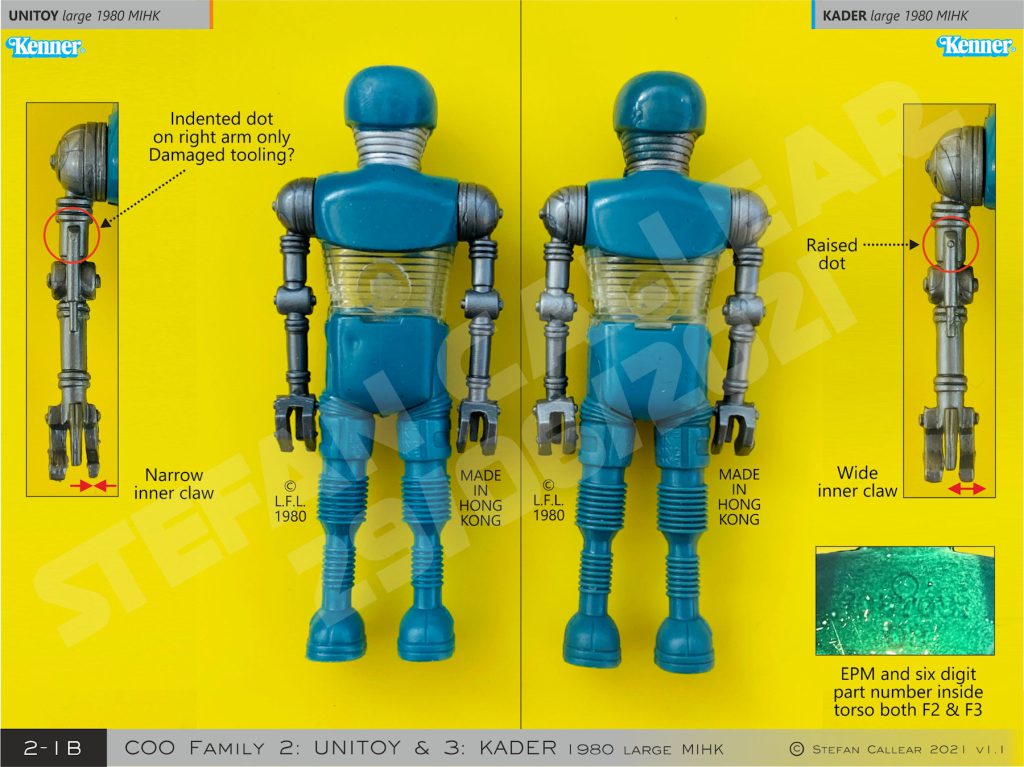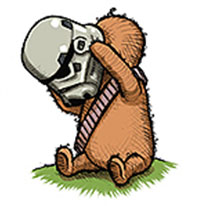
walkie
TABLE OF CONTENTS
The Asian factories involved are Smile (7L MIHK & 3L NoCOO), Unitoy (7L MIHK) & Kader (7L MIHK). Poch (early PBP) imported mostly unpainted Kenner parts and accessories to construct their figures for distribution across the Spanish market.
The Unitoy 2-1B was distributed solely to the North American market whilst examples from other factories can be found on Palitoy, Clipper, Kenner Canada, General Mills and Meccano cards. I’ve included an updated version of Wolff’s coo guide which separates and expands the previous F2 into two separate families for Unitoy & Kader. Please visit our Introduction to COOs page to learn more about the whole COO identification process.
F1.1: (small) 1980 MADE IN HONG KONG COO
EARLY RELEASE
Appearing on the Kenner ESB 41D and Palitoy 41BN cards this early era figure had a very limited production Lifecycle. The reason for the change appears to be production related with tacky paint and plastic flow problems during the injection moulding process of the head. Overstock of this figure can be found on Kenner ROTJ 65B cards labelled “Figures made in Hong Kong or Taiwan as labelled within”.
Some key sculpting details for the early era mould family 1.1 are:
- Gloss paint for the torso, sometimes found with finger prints or rubs
Gate scar located at the top of the head resulting in a mould defect below the mouth hole
LATER RELEASE
Making an appearance on the Palitoy ESB 45A card, the later release figure fixed the previous production problems and sported a brand new paint scheme. This release can be found on an array of Kenner cards from the ROTJ 65B through to the 79A and later appeared on European Trilogo cards.
Some key sculpting details for the later era mould family 1.1 are:
- Metallic paint for the torso
Gate scar moved to the side of the head (either left or right) resulting in a mould defect to the lower corner of the mouth
F1.2: SMILE NO COO
Same details as the unaltered 1.1 later metallic version.
F2: (large) 1980 MADE IN HONG KONG COO
As we now understand, several of the Asian factories shared common toolmakers and this originally lead to the confusion with pairing all large MIHK figures into one family. This Unitoy release was only distributed during the ESB era on Kenner 41A through to the 48C cards. As mentioned in previous figure focus’s during the end of the ESB output, Kenner HQ decided to move a lot of the current production line away from the Unitoy factory with the majority of the steel moulds going to Spain for their PBP line. The Unitoy 2-1B however did not make a re-appearance so the final resting place for the tooling remains unknown.
Some key sculpting details for the mould family 2 are:
- Semi-gloss paint for the torso
- No mould seams under the feet
- Cavity letter B or C in the centre of the torso, note B has a minor variant and can be above or below the cavity no.
- Light silver paint for the chest badge and neck
F3: (large) 1980 MADE IN HONG KONG COO
Appearing early doors in the UK on the Palitoy ESB 30B card and soon after the 41A, this factory variant dominated the UK market until Smile took over UK distribution with the ESB 41BN card. It appears to have been sparsely distributed in the US which was mainly Unitoy at the time but did appear on ESC 41D and 48 cards, before reappearing on ROTJ 65E and 77B cards.
Some key sculpting details for the mould family 3 are:
- Matt paint for the torso
- Mould seams under the feet
- Cavity letter A or D in the centre of the torso
- Dark silver paint for the chest badge and neck
- The head and legs are prone to discoloration
